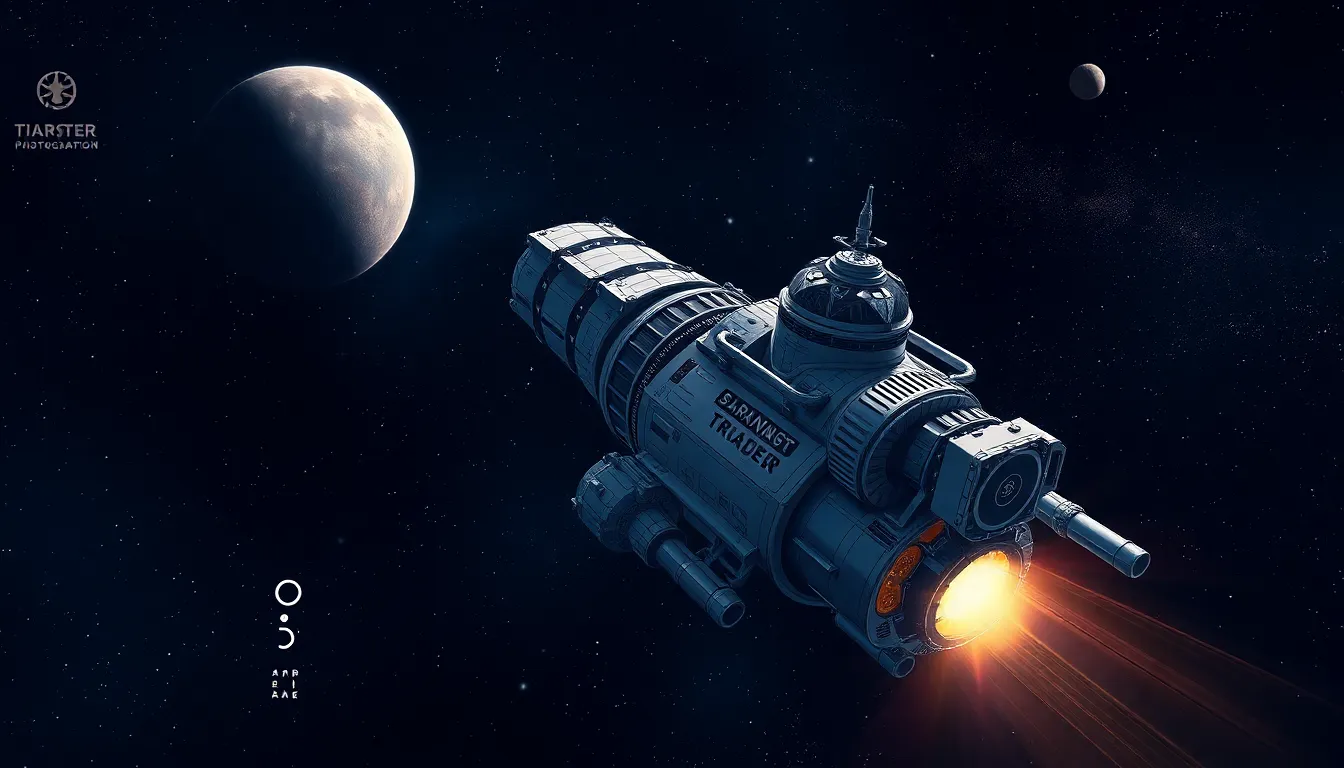Table of Contents
ToggleIn the vast expanse of space, navigating a spacecraft is a complex and crucial task. As missions venture farther from Earth, the need for precise navigation becomes even more critical. Whether it’s sending rovers to Mars or positioning satellites in orbit, understanding the principles of spacecraft navigation can make or break a mission.
Spacecraft navigate using a combination of advanced technologies, including star trackers, gyroscopes, and GPS systems. These tools help determine a spacecraft’s position and trajectory, ensuring it reaches its destination safely and efficiently. As technology evolves, so do the methods of navigation, paving the way for more ambitious explorations beyond our planet.
Overview of Spacecraft Navigation
Spacecraft navigation is critical for the success of missions, especially as spacecraft venture farther from Earth. It utilizes advanced technologies to ensure precise positioning and trajectory calculations.
Importance of Navigation in Space Missions
Navigation plays a vital role in space missions, impacting both safety and success. Accurate navigation enables spacecraft to reach intended destinations, maintain orbits, and perform maneuvers. For example, the precision in trajectory calculations ensures spacecraft like Voyager or Mars rovers can complete complex objectives. As missions like Artemis or future Mars colonization efforts advance, reliable navigation becomes indispensable.
Key Challenges in Spacecraft Navigation
Spacecraft navigation faces several challenges that impact mission effectiveness.
- Distance: Increased distance from Earth complicates communication and navigation data accuracy.
- Radiation: Space radiation interferes with sensors and navigation systems, affecting reliability.
- Gravitational influences: Gravitational variations from celestial bodies can alter a spacecraft’s trajectory unexpectedly.
- Environment: The harsh conditions of space, including temperature extremes, test the durability of navigation equipment.
These challenges necessitate continual advancements in navigation technologies and methodologies to enhance mission success.
Types of Spacecraft Navigation

Spacecraft navigation employs various methods, each essential for ensuring precise trajectory and position determination during missions. The three main types of navigation are celestial navigation, inertial navigation, and ground-based navigation.
Celestial Navigation
Celestial navigation uses stars and celestial bodies as reference points. Spacecraft equipped with star trackers calculate their position by analyzing the angles between stars. This technique provides reliable data, especially in deep space where GPS signals are unavailable. Notably, the Mars rovers employed celestial navigation during their missions to enhance location accuracy.
Inertial Navigation
Inertial navigation relies on onboard sensors, such as accelerometers and gyroscopes, to track a spacecraft’s position and velocity. These sensors measure the spacecraft’s acceleration and rotational movements over time. This method allows navigation without external references. However, it can drift over long durations, requiring periodic updates from other navigation systems, such as celestial or ground-based navigation.
Ground-Based Navigation
Ground-based navigation uses data relayed from Earth to monitor spacecraft trajectories. This method typically involves tracking signals from ground stations that communicate with spacecraft electronics. Systems such as NASA’s Deep Space Network utilize radio signals to determine position and course adjustments. Ground-based navigation is crucial during missions closer to Earth, enabling constant updates and corrections to ensure mission objectives are met.
Navigation Technologies
Spacecraft navigation relies on various advanced technologies to ensure precise positioning and trajectory management. These technologies enable successful missions, especially as spacecraft venture beyond traditional boundaries.
GPS and Other Satellite Systems
Global Positioning System (GPS) and similar satellite systems play a critical role in spacecraft navigation within proximity to Earth. GPS uses a network of satellites to triangulate position, providing accurate data for trajectory adjustments. Other satellite systems, such as the European Union’s Galileo and Russia’s GLONASS, complement GPS, offering additional accuracy and redundancy. These systems are essential for missions requiring precise positioning data, such as Low Earth Orbit (LEO) operations and International Space Station (ISS) supply missions.
Autonomous Navigation Systems
Autonomous navigation systems enhance spacecraft self-sufficiency by incorporating advanced algorithms and onboard sensors. These systems analyze data from various sources, such as celestial bodies and onboard instruments, allowing spacecraft to navigate independently. Notable examples include the Mars rovers, which autonomously adjust their paths based on environmental inputs. Autonomous systems reduce reliance on ground control, enabling more efficient operations during deep space missions.
Sensors and Guidance Systems
Sensors and guidance systems facilitate accurate navigation through real-time data collection and processing. Inertial measurement units (IMUs) and star trackers are pivotal components in these systems. IMUs monitor changes in velocity and orientation, while star trackers identify stars to provide reference points for navigation. These systems work collectively to ensure a spacecraft adheres to its planned trajectory, compensating for any deviations caused by external forces like gravitational pulls from celestial bodies. Advanced guidance algorithms further refine navigation accuracy, influencing mission success rates.
Case Studies in Spacecraft Navigation
Spacecraft navigation has evolved significantly through numerous missions, showcasing innovative technologies and approaches. Historical and recent examples illustrate the importance of precise navigation in achieving mission objectives.
Historic Missions
Historic missions exemplify the evolution of spacecraft navigation methods. One notable example is the Voyager program, launched in 1977, which employed celestial navigation techniques. Using star trackers and onboard sensors, Voyager 1 and Voyager 2 navigated through the outer solar system, successfully reaching Jupiter and Saturn. Their ability to utilize celestial bodies for position referencing proved essential as they ventured beyond the influence of Earth-based navigation systems.
The Apollo missions demonstrate another pivotal case in spacecraft navigation. During Apollo 11, the Lunar Module relied heavily on inertial navigation systems and ground-based updates for trajectory corrections. The precision of these technologies allowed astronauts to land on the lunar surface safely, marking a significant milestone in human space exploration.
Recent Innovations in Navigation Technologies
Recent innovations have transformed spacecraft navigation, enhancing mission capabilities and safety. Autonomous navigation systems, like those used in the Mars rovers, integrate advanced algorithms and onboard sensors. These systems enable rovers, such as Curiosity and Perseverance, to independently navigate through challenging Martian terrain without relying on constant communication with Earth.
Improved GPS technologies also play a role in recent navigation efforts. High-precision satellite positioning enhances coordination for near-Earth missions. NASA’s Artemis program aims to utilize these advancements to facilitate lunar exploration, ensuring accurate trajectory calculations for sustainable missions.
Additionally, the development of advanced sensors, such as improved inertial measurement units (IMUs) and star trackers, augments navigation accuracy. These systems provide real-time data for trajectory adjustments, significantly increasing mission success rates and enabling deeper space exploration ventures.
Future of Spacecraft Navigation
Advancements in technology signal a transformative era for spacecraft navigation, shaping future missions and exploration strategies. Emerging trends in navigation systems will likely address current challenges and redefine how spacecraft maneuver through space.
Emerging Trends
Adaptive algorithms enhance navigation systems by analyzing real-time data and adjusting trajectories instantaneously. Increased autonomy allows spacecraft, like Mars rovers, to execute complex tasks independently, responding to unforeseen obstacles. Collaborative navigation systems enable multiple spacecraft to share information, improving overall mission efficiency and accuracy. Machine learning techniques are being implemented to predict potential navigation failures, ensuring successful mission outcomes. Advanced sensor technologies, such as LiDAR and improved IMUs, enhance precision, while quantum positioning systems may offer revolutionary positioning methods, significantly minimizing drift errors.
Anticipated Challenges
Navigating increasing distances from Earth poses significant difficulties, including communication delays that hinder real-time updates. Space radiation continues to threaten sensor reliability, potentially leading to errors in navigation data. Gravitational anomalies from celestial bodies complicate trajectory calculations, demanding more sophisticated modeling. Harsh environmental conditions, such as extreme temperatures and radiation exposure, require robust navigational systems capable of withstanding adversity. Furthermore, the integration of emerging technologies introduces complexities, necessitating thorough testing to ensure system reliability and safety across diverse mission conditions.
Spacecraft navigation stands at the forefront of modern space exploration. As missions push the boundaries of what’s possible, the importance of precise navigation cannot be overstated. With advancements in technology and innovative methodologies, spacecraft can now navigate with greater accuracy and autonomy.
The challenges posed by the vastness of space and its unpredictable conditions necessitate continuous improvement in navigation systems. Future missions will rely on cutting-edge technologies that not only enhance safety but also expand the horizons of exploration. As humanity ventures deeper into the cosmos, mastering the art of navigation will be key to unlocking new discoveries and ensuring mission success.







